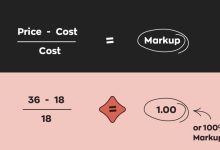Before we start, it’s important to emphasize: running a replica self-hosted store is completely different from selling regular products.
For those transitioning from regular products to replicas, you must abandon habitual operational thinking.
Otherwise, even if you consider yourself a top cross-border seller of regular goods, failing to follow the replica-specific strategies will make this industry feel frustrating, challenging, and even demoralizing.
Today, based on my own experience, I — Marcus Steele — will share a simple, straightforward, and highly effective approach to product selection in the replica market.
This is meant to provide a framework for fellow industry professionals.
More detailed demonstrations and step-by-step operational guides will be shared in future articles.
In the e-commerce world, there’s a widely accepted saying: “30% operations, 70% product selection.”

This highlights just how crucial product selection is, especially in the regular product market.
If your product selection is off, all your efforts are essentially wasted.
The reason is simple — regular product SKUs are overwhelmingly abundant. Every category and subcategory has an astonishing number of options.

The same logic applies to self-hosted stores like Shopify.
With sellers from all over the world competing in the same crowded marketplace, how do we pick the “needle” — the hot-selling product — from the vast ocean of regular products and make it a star in our own store?
In the regular product market, represented by platforms like Amazon and Shopify, many sellers rely on tools for product research.
There are plenty of these tools on the market — for example, Commerce Inspector for Shopify, JungleScout for Amazon, and various ad spying tools.
As for product selection strategies, a quick search online will show endless articles about “step-by-step product research,” “latest selection strategies,” or “how to pick products fast.”
There’s no shortage of guides and so-called “practical tips”: how to identify product selling points, find inspiration, expand horizontally or vertically, or discover niche products with competitive potential.
Honestly, for sellers with some operational experience, it’s easy to see that most of this information is all theory, with little real-world value.
The guides are long, detailed, and full of technical jargon. Sellers without patience may feel overwhelmed and struggle to find the core actionable insights. Even patient sellers often find that, when applied, many of these strategies don’t actually lead to discovering true bestsellers.
In reality, many top-performing regular product sellers I know — those who make thousands of orders per day — don’t bother with all the “horizontal or vertical expansion” tricks.
They may use tools to check data as a reference, but mostly they rely on their product intuition, industry experience, and manual screening combined with the supply chain to carefully pick products that generate explosive sales.
I believe complex problems should be simplified.
The principle of “great truths are simple” applies universally — and cross-border product selection is no exception.
Today, let’s talk about product selection in the replica e-commerce market.
I truly believe there’s no need to make it as fancy and complicated as Amazon or Shopify — keep it simple and straightforward!
Compared to regular products, replica products have three major advantages:
-
Fewer SKUs: The number of products is far smaller, so we’re not overwhelmed or “dizzy” when choosing.
-
Built-in traffic potential: As long as the overall selection direction is correct, most products will generate some sales.
-
High profit margin: You don’t need huge order volumes. While others sell a single bag, you can sell dozens or even hundreds of smaller “premium” items.
For product selection, a “manual screening + selective tool usage” workflow is enough to lock in the real hot-sellers — they won’t escape your notice.
Great truths are simple.
This is why I advocate a simple, straightforward approach to product selection.
Simple Product Selection Method
Based on my industry experience, combining manual screening with the support of certain tools, I’ll share several replica product selection methods for your reference:
1). Suppliers
Here, suppliers refer to truly capable and reliable supply chain resources.
A strong supplier not only has competitive prices but also maintains significant daily sales volumes.
Why does this matter?
A supplier with real sales history provides sample data that shows which products sell well, in which markets, and at what times.
It’s also why such suppliers can offer the most cost-effective and quality-assured supply chain resources.
The market is full of replica suppliers, and many are middlemen or only do one-off deals. Be careful to vet your partners properly.
For my clients, I provide high-quality supply chain resources,
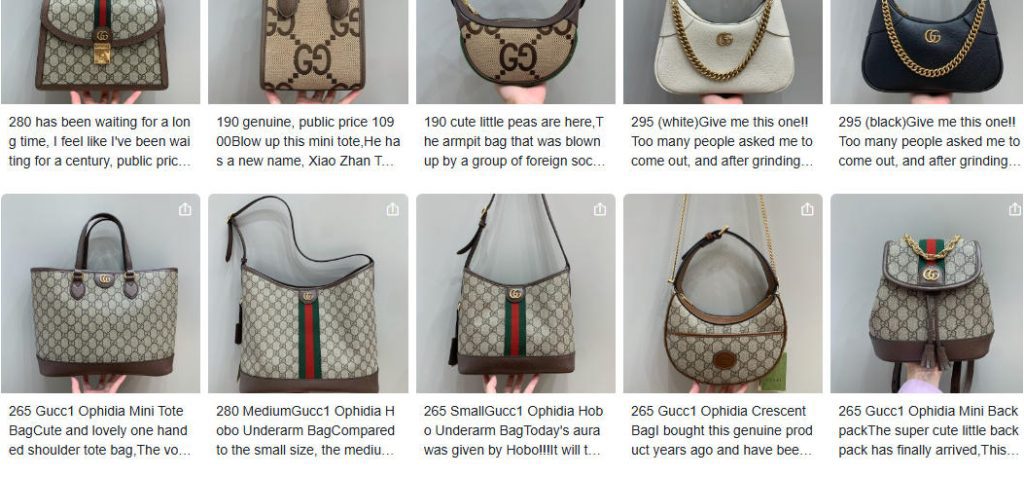
and if needed, my team can also offer global dropshipping services.
The principle here is simple: choose the right suppliers and leverage their experience.
Good suppliers can recommend hot-selling products, help you avoid mistakes, and save a lot of budget wasted on poor product choices.
2). YouTube
In the KOL traffic strategy, I’ve highlighted the YouTube influencer collaboration process and systematically introduced a complete cooperation mechanism — which shows just how important YouTube KOLs are!
In the sales data of my clients, KOL marketing is one of the only two “engines” that can keep pace with paid traffic.
For clients who leverage influencers well, a single night can generate dozens of high-quality orders for replica bags.
With the influencer effect as a trust signal, the average order value also becomes much more significant.
YouTube, as a child of Google, carries immense search authority, bringing the most precise and high-quality buyers.
So, on such an important platform, the key question is:
How do we discover hot-selling products on YouTube?
By entering relevant keywords, you can quickly identify top influencers by view counts.

Keep in mind, most high-view videos at the top aren’t replicas — the majority showcase second-hand authentic products.
Of course, some influencers do mix in replicas, but in general, the products they feature represent what is relatively trending at the moment.

Take, for example, this classic LV monogram bag — its sales over the past few years speak for themselves, and the market continues to buy it consistently.
This also applies to other classic models.

In fact, when it comes to the “Big Three” brands — Louis Vuitton, Gucci, and Chanel — their classic items remain evergreen.
No matter how often they are sold, these timeless pieces never go out of style and continue to generate strong sales.
It’s important to note that what YouTube shows us is only an initial impression of a product.
We still need to check the landing page provided by the influencer to review related sales data or engagement metrics.

By analyzing these interaction data points, we can further validate and reinforce our product selection decisions.
3). E-Commerce Platforms
By using specific keywords, we can find a large number of replica products on third-party e-commerce platforms.
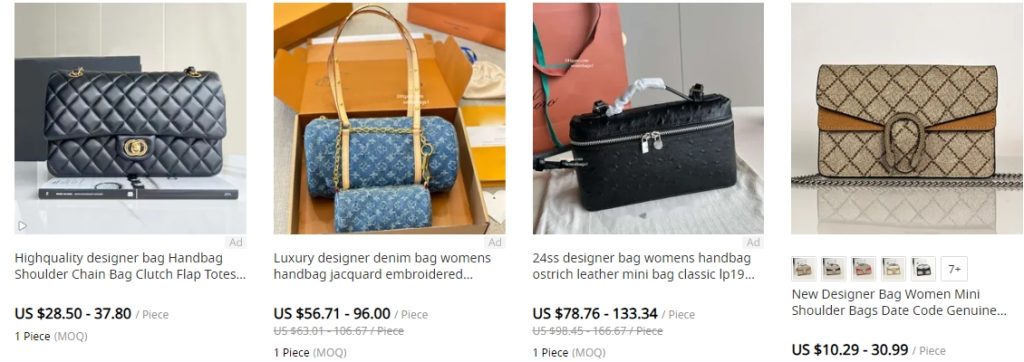
By looking at the sales data of these products,

it becomes much easier to identify which items are currently hot-selling.

4). AdSpy
For those running paid ads, AdSpy should be a familiar tool — and it’s extremely useful.
Not only does it provide ad copy inspiration and audience targeting references, but it can also help with product research.
For example, take the Blue Balloon series — by checking its comments and engagement, we can see how it truly demonstrates that classics never go out of style.

The product research approach with AdSpy is very straightforward.

Using its built-in filter tools, you can narrow down the market by factors such as country, gender, age, and date.
By filtering top-performing ads and considering the ad posting date,

it becomes extremely easy to identify trending products and hot-selling items.
5). Facebook Ads Library
All data captured by Facebook ad spy tools ultimately comes from the official Facebook Ads Library at facebook.com/ads/library.
Tools like AdSpy rely on this official source.

The main difference between the official library and various spy tools is that the official library does not provide sorting functions, such as sorting by likes or posting date.
Most of the time, the official library can only serve as a basic reference for product research, so its utility is limited.
6). AI Tools
For example, the well-known ChatGPT can be a helpful tool for sellers.

The free version has limited capabilities, while more advanced features require upgrading to ChatGPT 4.0. However, pinpointing specific product models is still somewhat challenging.
Nowadays, AI tools are very popular. They can be used not only for product research but also to generate ad copy, product descriptions, and other marketing content.
When used effectively, AI can significantly improve efficiency and results.
Long-Tail Effect
For those who carefully select products, it’s not hard to notice that many best-selling replica items are classic models.
These designs were introduced years ago but remain timeless, with newer versions only slightly upgraded from the originals — truly proving that classics never go out of style.
Over time, these long-standing hot-sellers attract many sellers, leading to price wars and fierce competition.
At this point, you should ask yourself:
Can your supply chain match these high-priced items?
Some sellers rely on perfect replicas and large-scale production, but is this model suitable for you?
If not, why compete in the overcrowded “Big Three” brands?
Consider brands like Fendi, Saint Laurent, Valentino, which have fewer competitors — these SKUs may offer better opportunities.

Using a long-tail product strategy, even a small change in your product selection direction can lead to unexpected advantages.
Otherwise, why do so many sellers explore third- or fourth-tier niche brands in the market?
 Custom E-commerce Solutions for High-Quality Designer-Inspired Fashion Replicas | Website Development, Dropshipping, Payment Integration for PayPal and Stripe, Ad Cloaking Services
Custom E-commerce Solutions for High-Quality Designer-Inspired Fashion Replicas | Website Development, Dropshipping, Payment Integration for PayPal and Stripe, Ad Cloaking Services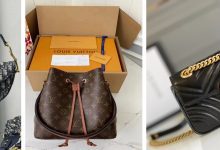




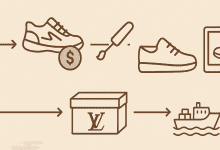





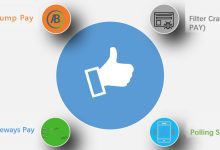





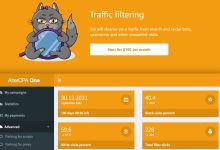










![5 Best WordPress Themes for Replica Product International Trade Websites [Recommended]-Custom E-commerce Solutions for High-Quality Designer-Inspired Fashion Replicas | Website Development, Dropshipping, Payment Integration for PayPal and Stripe, Ad Cloaking Services](https://replicasmaster.com/wp-content/uploads/2025/06/1-1-220x150.jpg)
